
Penn Glee Club performs in Tokyo, Hong Kong, and Beijing
This story was originally published on June 23rd 2025 in Penn Today. Writer: Louisa Shepard The Penn Glee Club performed at the famous Suntory Hall
76 years ago, associate professor William Fontaine became Penn’s first Black faculty member. A philosophy scholar and an important authority on Black culture, he was one of the few Black faculty members at Penn and the only Black philosopher in the Ivy League. He traveled around the globe to discuss Pan-African issues, but his largest impact may be on the students he taught in his two decades at Penn — winning the University’s only award for teaching in 1958 after being named “Lecturer of the Year.”
In the following decades, much has changed. In 2022, 10.2% of Penn’s standing faculty identified as underrepresented minorities, and 38% of students identified as non-white. The University has also increased the hired faculty and unique courses offered in departments like Africana Studies and History, building a network for students and professors to study Black life and culture.
In the past month, as the University scrubs references to diversity, equity, and inclusion, Penn’s faculty and staff have remained committed to teaching their complex and diverse lessons. Here are the stories of four Penn faculty members who are teaching Black history, culture, and identity in innovative ways.
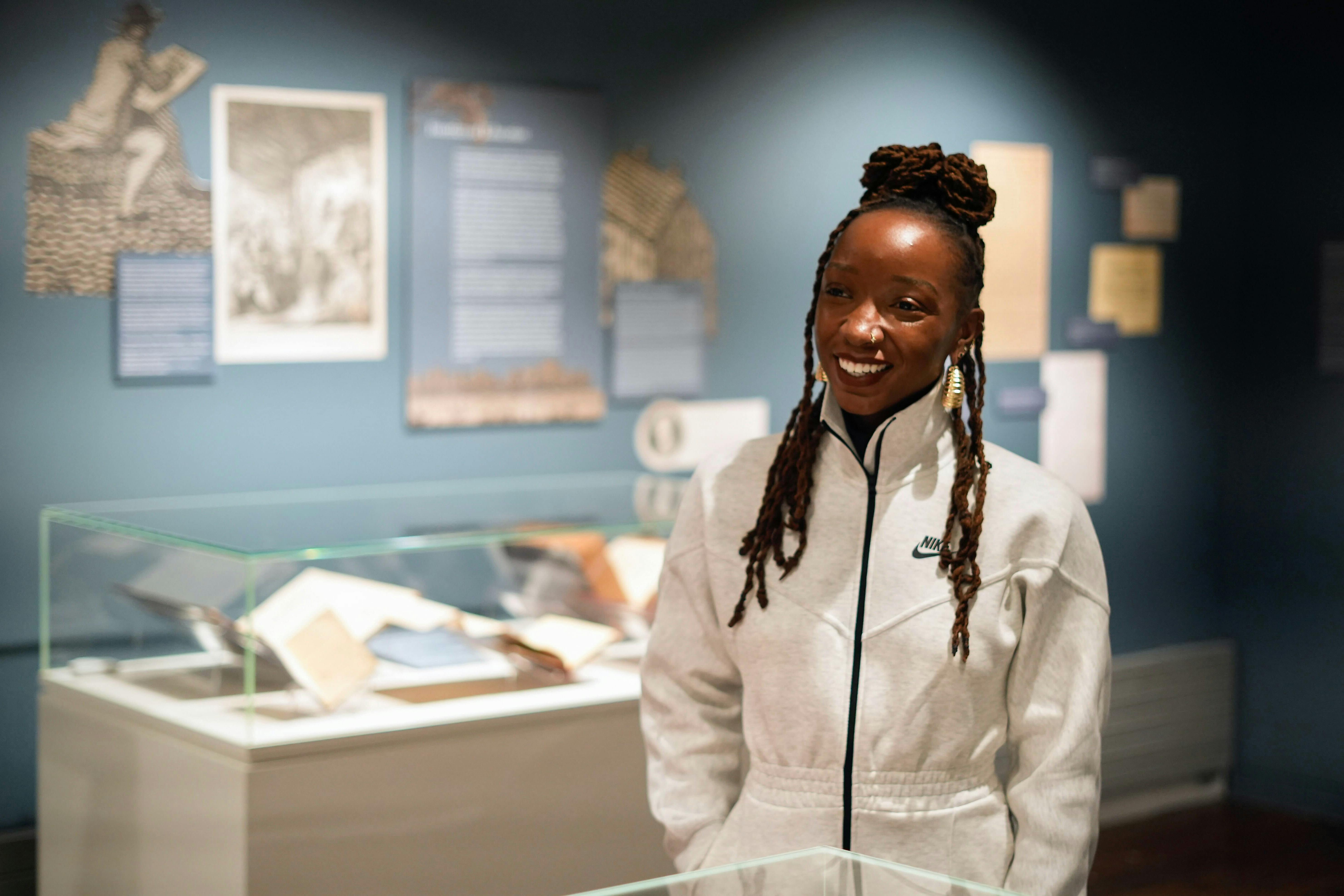 Breanna Moore, History Ph.D. Candidate and Fontaine Fellow
Breanna Moore, History Ph.D. Candidate and Fontaine Fellow
To honor Fontaine’s legacy, a fellowship was established in 1970 to support underrepresented graduate students in their studies at Penn. Ph.D. candidate Breanna Moore is one of those fellows.
In her time as an undergraduate and graduate student at Penn, Moore has used multimedia displays to disseminate history, such as developing an exhibit on the Penn & Slavery Project’s augmented reality tour. She currently teaches HIST 2162: “Beyond 40 Acres and a Mule: The History & Practice of Reparations in the African Diaspora” — an ABCS course focused on reparatory and racial justice. This course, she says, interrogates critical questions, asking, “How did enslaved people and their descendants conceptualize reparations? What strategies do they employ to achieve reparations? How do present-day movements for reparations seek to address historic harms?”
In the classroom, Moore challenges her students to see the intersection of history and activism.
“This is an action-oriented course that explores the root of reparations, which is repair,” Moore said.
In her dissertation, researching Britain’s indemnities during the abolition of the transatlantic slave trade, she found that the period “doesn’t get a lot of attention.” In her course, she said she aims to bring forward the conversation about who has been compensated for the legacies of slavery and who hasn’t.
“I was inspired to create this course because of my passion for history and learning about the struggles of people of African descent who were impacted by transatlantic trafficking in African people and the institution of slavery,” she said. “I wish that I had the opportunity to take a course on reparations when I was an undergraduate.”
As a consultant for the New Jersey Reparations Council and former co-chair of the Philadelphia Reparations Task Force — among many other leadership roles and fellowships — she has played a key role in reparations organizing. She has also advised Georgia state lawmakers and the United Nations on reparations policy.
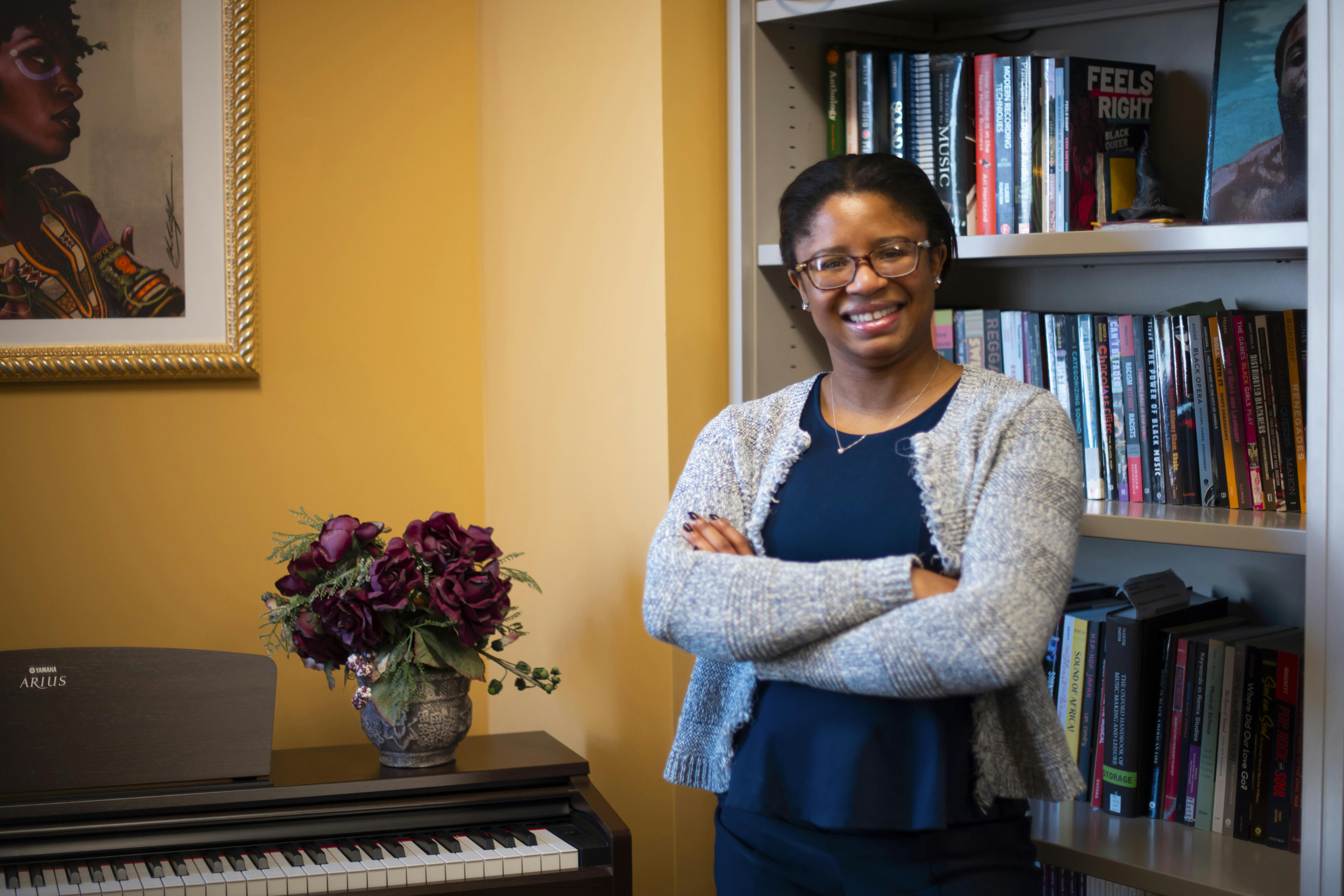 Jasmine Henry, Assistant Professor in Music
Jasmine Henry, Assistant Professor in Music
As a high school student at Northfield Mount Hermon, a boarding preparatory academy in Massachusetts, Bryan Suh says he received a well-rounded education grounded in a sense of community and purpose. Every student at the school not only studied and participated in sports but also put in a weekly four hours of work across campus, Suh says. Some of his fondest memories included working on the farm and learning how to collect sap for maple syrup.
All students at the school were also encouraged to ask themselves four essential questions, he says: Who am I? What is my place? What does it mean to be human? How then shall I live?
The eldest of three brothers, Suh was born in New Jersey. His parents moved back to Seoul following his father’s completion of a master’s degree in economics at New York University. Suh recalls visceral memories from this time of his grandparents’ recollections about their struggles under Japanese rule and during the Korean War.
“It was always ingrained in me,” he says, “that this life of luxury that I enjoyed as a kid was very transient. Life is going to be a struggle. But you want to find things that you’re interested in or attracted to, find other people who interest you, who you want to get closer with and do difficult things together.”
Suh, who is Korean American, volunteered with the Marine Corps and will be commissioned May 17. He says part of the decision was pragmatic. He received a scholarship through the NROTC program. As the eldest child “I had this, ‘have-to-be-mature-and-responsible’ thing going on,” Suh says. “I wanted to give back to my parents.”
But the other part is due to Suh’s ethos of “doing difficult things together.” He enjoyed his time at Northfield Mount Hermon, especially the camaraderie and grueling endurance he found on the rowing and alpine skiing teams and says he sought an extension of those experiences through military service. “For me, it was wanting to be a part of a community that was really tight-knit and kind of like something bigger than myself.”
This is part of our common humanity, Suh says. “To be human means to be a social creature,” a concept that was hammered home in the courses Suh took at Penn as a philosophy, politics, and economics major and classics minor, studying international security, American foreign policy, and Rhetoric and the Community, an SNF Paideia course where classmates had to debate a prepared speech every week.
“Being a leader is fundamentally about caring for your people and treating them like human beings,” Suh says, which is something he’s taken away both from his naval science courses and his ethics curriculum at Penn. “The mark of whether or not your time at Penn has been successful is if you can apply these principles,” he says.
“I don’t care how well you can talk to me about ethics, AI, or business analytics, if you can’t describe to me what it actually means to work as a unit with your peers or the people who you’re going to be leading,” he says. “Look out for your people.
When Mike Jackman, C’85, walks the red carpet with his wife, Lisa, W’88, at the Academy Awards on March 2, it will be his third time attending the event. “I’ve had the nosebleed seats twice,” he says. “Apparently, this time we’ll be pretty close to the stage in case we happen to win.”
Jackman is being modest, but he’s referring to the eight nominations for Conclave—a film he produced with Tessa Ross and Juliette Howell about the closed-door process to select a new pope. The list of honors includes a chance at Best Picture; though previous projects Jackman’s worked on have received the prized golden statuette, this is his first nomination. “It is truly a wonderful moment, both personally and professionally,” he says. “It’s kind of surreal, too.
At this year’s Oscars, Penn Arts & Sciences will be well represented: Alongside Jackman, Fred Berger, C’03, is nominated for A Complete Unknown, and Marc Platt, C’79, is nominated for Wicked.
The work lives of this trio have overlapped in other ways, too, Jackman notes. “Fred and Marc produced La La Land together, and Fred was an intern for me on Eternal Sunshine of the Spotless Mind,” Jackman says. “He did the title sequence, and he was Jim Carrey’s hand double. You know, it’s interesting, we didn’t even have a film program when I was an undergraduate, but a lot of us ended up in film.”
This past Sunday, Conclave won Best Picture at the British Academy Film Awards, more commonly known as the BAFTAs. Ahead of the industry’s biggest night in the U.S., Omnia spoke with Jackman about his career path and his time at Penn, plus what advice he would give to today’s college students.
Can you describe the moment you learned you were nominated for Best Picture?
It’s such a singular thing to have happen, to expect anything was silly, but I was obviously hoping. Best Picture is also the last of the categories to get announced. We were keeping notes on which Conclave categories got nominated, and they finally get to that last one. You see your name up there and see it announced and it’s super exciting. I was just home with my wife. It’s funny, I have all these filters on my email, so I literally didn’t get the email from the Academy congratulating me until four days later.

What role does a producer play on a film like this?
The producer can be a lot of things. My role, and what I like to do most, is act as a liaison between the creative plan and roadmap for the movie from the director and other producers and everyone who reads the script, and the budget and resources available. How can we do this amazing project at the highest levels with the time and money we have? That’s a problem-solving job first and foremost, and we’re creating invisible compromises; they’re visible to us, but we like to think invisible to the audience.
There’s friction there across everything but it’s respectful and creative. That friction causes the need to defend what you’re going to shoot—and that creates a lot of thoughtfulness. I think there’s a disciplined nature to the art of filmmaking and there’s benefit to challenging those creative assumptions. What am I doing? Why is it there?
You were a psych major at Penn. How did you go from that to film?
I was interested in psychology, but I didn’t think I wanted to be a psychologist or psychiatrist. The only part of my “plan” was that med school was not part of it. I thought acting could be fun, and after graduation I was able to get a job as a production assistant on a movie. I figured, let me get into any job that gives me access, and I’ll find my way forward.
So, I spent the next three years as a production assistant. My second job was the care and feeding of Cher, Dennis Quaid, and Liam Neeson. They were great, a lot of fun. Then the third film I did was called Mississippi Burning, and I bugged the director every day to put me in the movie. Finally, he put me in, I got a speaking part, and I got into the Screen Actors Guild. But I had seen the life of an actor—it’s a really hard life, especially how much rejection it is, not because you’re good or bad but because of what you look like and what time it is and who you’re standing next to and 100 other reasons, including your talent.
The advice I was given is if you can live without acting, then for God’s sake, live without acting. I said, let me look at this producer thing, and then I spent the next 20-something years doing it. I was led by curiosity, learning something new, being challenged, a little bit of not being afraid to try anything. At least a third of the jobs I had I didn’t know how to do them when I got them. I just figured it out.
What are some of your most memorable experiences at Penn?
I loved Penn. In my freshman year, I played football, I rowed crew. I also got randomly assigned two roommates, and we were all very different but the chemistry between us was just great. We ended up living together all four years. We rushed frats and then just decided to hang out ourselves. Senior year I joined the a cappella group Pennsylvania Six-5000 (today called Penn Six).
I just had a great time at Penn. I enjoyed the people I met. I enjoyed the rhythm of it. I enjoyed getting to know Philly, the Penn pride of it all. My father went to Penn, class of ’53, my uncle went to Penn, class of ’56. My wife, I didn’t know her while we were there, but she was Wharton ’88. My daughter was College ’21, my son is Wharton ’25. We’re quite the Penn family. Two of my closest friends to this day are from my time at Penn.
What advice would you give to college undergrads today?
First, and it’s a little bit of cliché, but I do believe that if you love what you do you never work a day in your life. If you wake up and you’re excited about doing what you’re doing, keep doing it. If you’re dreading the day, give a thought to what you’re doing. There are lots of way to plan your life and your career. I led with curiosity.
Try to be fearless. Be curious and don’t be afraid to try something you don’t know how to do. And what’s that saying? You have two ears and one mouth, so listen twice as much as you talk. It’s something I’m still working on, too. Never stop trying.
Tamara Greenfield King, J.D., Senior Associate Vice Provost for Student Affairs with the Division of University Life, was an honoree in the inaugural cohort of the Goldstone Association for Student Conduct Administration (ASCA) Foundation’s Legacy of Excellence awards. This prestigious recognition celebrates individuals who have made significant and enduring contributions to the field of student conduct administration and higher education.
King was one of seven distinguished recipients honored for their impactful scholarship and research, and/or leadership within ASCA and other organizations. Her career includes two decades of service at Washington University in St. Louis, where she held key roles such as Associate Vice Chancellor for Student Support and Wellness. At Penn, King oversees several University Life units, including the Office of Student Affairs, Career Services, Naval ROTC, Platt Student Performing Arts House, and the Office of Fraternity and Sorority Life. She is also a lecturer in the Graduate School of Education.
A trailblazer in her field, King served nine years on the ASCA Board of Directors and was the organization’s first African American President (2009–2010). She has authored numerous works on topics such as student conduct administration, social justice, Title IX, and diversity, equity, inclusion, and belonging in collegiate leadership. Before transitioning to higher education, King practiced law, established her own law firm, and became the first African American Assistant District Attorney in Northampton County, Pennsylvania.
The Legacy of Excellence awardees were celebrated during the ASCA Annual Conference in Portland, Oregon, from February 5–8, 2025. King’s recognition underscores her profound impact on the profession and her commitment to advancing the field of student conduct and student affairs.
To learn more about the Raymond H. Goldstone ASCA Foundation and see the complete list of honorees, visit Legacy of Excellence – ASCA Goldstone Foundation.

This story was originally published on June 23rd 2025 in Penn Today. Writer: Louisa Shepard The Penn Glee Club performed at the famous Suntory Hall
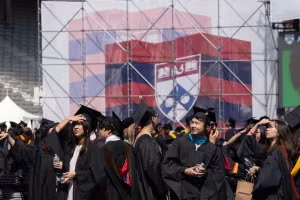
A daughter of Peruvian emigres and a first-generation student who graduated Penn last week offers a simple message to other Latin members of the Class

The University of Pennsylvania’s CS Radio podcast has been recognized nationally by Million Podcasts, earning a place on three of the outlet’s 2025 “Best Of”

This story was originally published on May 13th 2025 in Penn Today. Writer: Louisa ShepardPhotographer: Eric Sucar; Scott Spitzer Graduating fourth-year Jordyn Harris is pursuing

This story was originally published on May 1st 2025 in Penn Today. Writer: Jimmy O’HaraPhotographer: Eric Sucar; Scott Spitzer Marking a 109-year-old tradition, Penn third-year

This story was originally published on April 28th 2025 in Penn Today. Writer: Tina RodiaPhotographer: Eric Sucar Members of Penn’s Pan-Asian American Community House (PAACH)
One night a month, LGBT Center director Eric Anglero sits down with Center staff, faculty, and students for the Shapiro-Bezdek Family Dinners, a beloved tradition that was recently endowed by Penn alumnus Stuart Shapiro and their husband Rick Bezdek. The dinners create an environment of support for the LGBT community on campus and offer a moment, Anglero says, where “you can just be.”
Anglero has been in their new role for nearly a year and has plans for the Center’s continued growth, creating inclusion for people with marginalized genders and sexualities, both inside the LGBT Center itself and at Penn as a whole. “We are really trying to broaden what success looks like here beyond the walls of the Carriage House,” says Anglero, referring to their historic building just off Locust Walk.
In November, the Center hosted the Trans Day of Remembrance and Trans Week of Visibility in collaboration with the William Way LGBT Community Center in Philadelphia, along with partners at Penn, including Penn Carey Law, the Office of the University Registrar, and the Program in Gender, Sexuality, and Women’s Studies (GSWS). The Registrar hosted a clinic to explain how to change your birth name, and GSWS presented on the Trans Oral History Project, a community engagement initiative that preserves and makes publicly accessible the stories of trans, nonbinary, and gender-nonconforming people.
The weeklong programming is meant to both support trans community members at Penn as well as to hold “a place of mourning, of grief, of understanding the violence that has happened to trans communities across the globe,” Anglero says.
In the spring, the Center will welcome Chase Strangio of the American Civil Liberties Union, in partnership with Penn Carey Law as this year’s second scholar-in-residence. Events planned include Q Penn, the Center’s annual Pride Week beginning April 7, as well as Lavender Graduation, a celebration for the accomplishments of the graduating LGBTQ+ cultural community.
As part of University Life, connections and partnerships exist across the cultural centers, Anglero says. “There is so much infrastructure here we can strive to work with,” they say, noting that those intercultural connections can be impactful for students. Anglero also plans to continue partnering with queer and trans organizations in Philadelphia, including William Way, the Mazzoni Center, and even the Stonewall Sports League, which they participate in.
Penn’s fall semester officially began in August, as many students returned to campus. While staff, faculty, and postdocs are largely in West Philadelphia year-round, the fall marks a reset and starting point for many. The late summer and mild fall weather brings the natural beauty of campus to life.
The importance of wellness is a wholistic endeavor throughout Penn, with multiple centers focused on wellness and well-being. The Penn Food and Wellness Collaborative is a multidisciplinary program that engages the Penn community around wellness, food access, sustainability, and education. The Penn Farm is the University’s only on-campus farm and grows thousands of pounds of organic produce to support food access initiatives; its harvest in late August kicks off the fall semester.
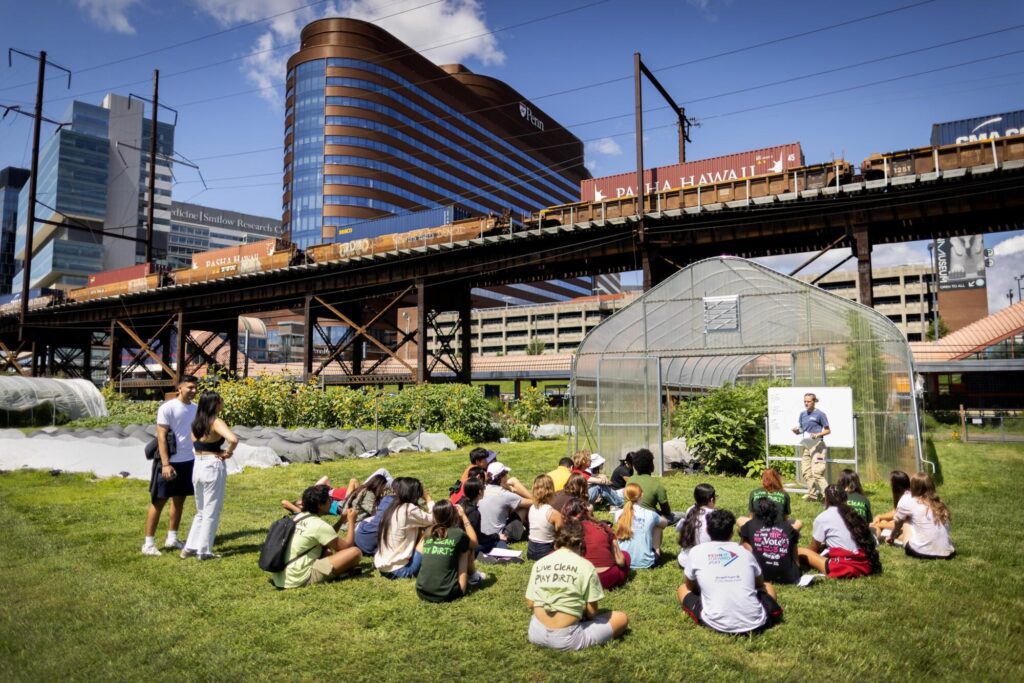

In late September, faculty, staff and postdocs gathered on Shoemaker Green and at Franklin Field for Penn’s 30th Annual Penn Friends and Family Day. Participants celebrated the Penn community and their families with games, sports, science, and cultural activities.

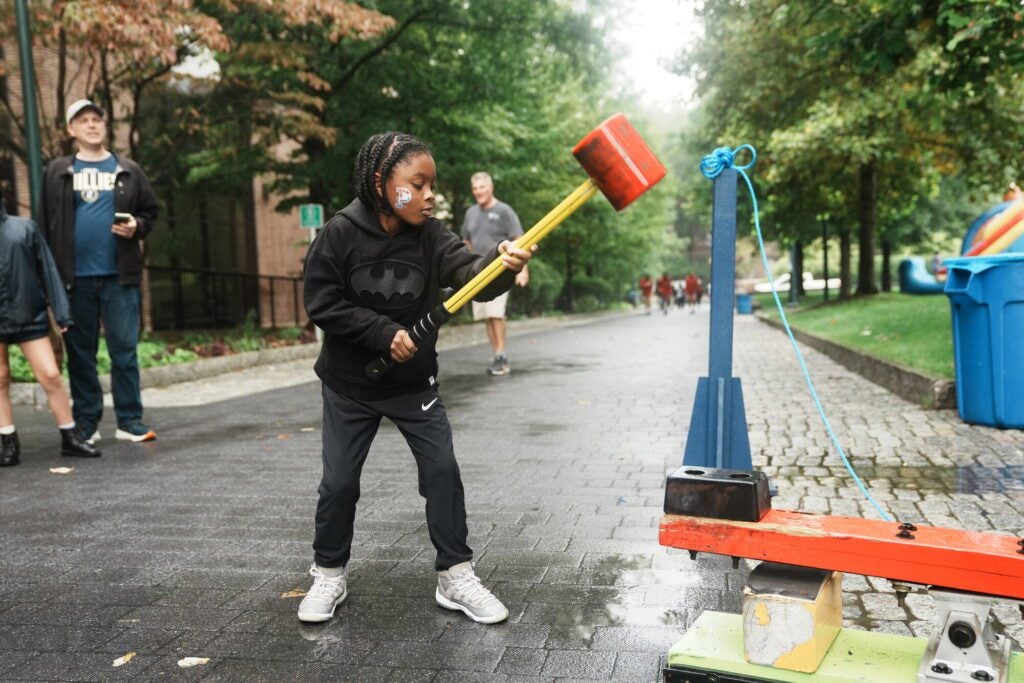


In Principle and Practice, Penn’s strategic framework, highlights climate change as one of the great challenges of our modern age, with the capacity to bring solutions through an interdisciplinary roster of experts in the climate and energy field. In October, Penn’s Climate Week brought together the entire University community to engage in learning and action around climate. The fifth annual event focused on climate solutions, which included a Climate Solutions Showcase, 1.5* and 60-minute lectures from experts across the University, youth speakers and career panels for students, and a “BioBlitz” at Kaskey Park, where attendees enjoyed a hands-on exploration of the biodiversity of Penn’s BioPond.
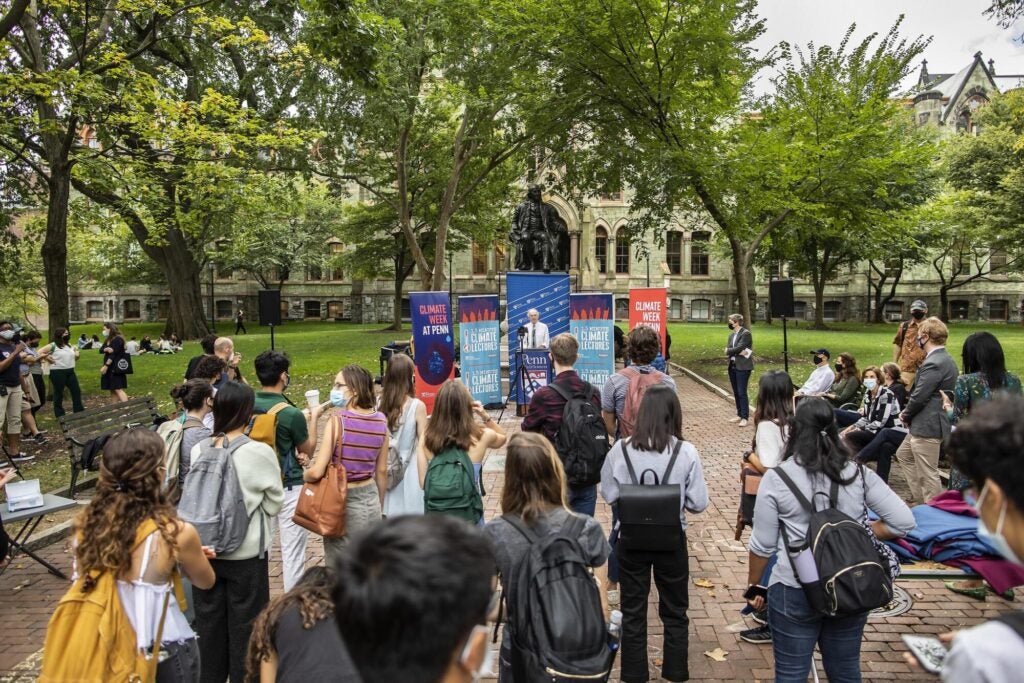
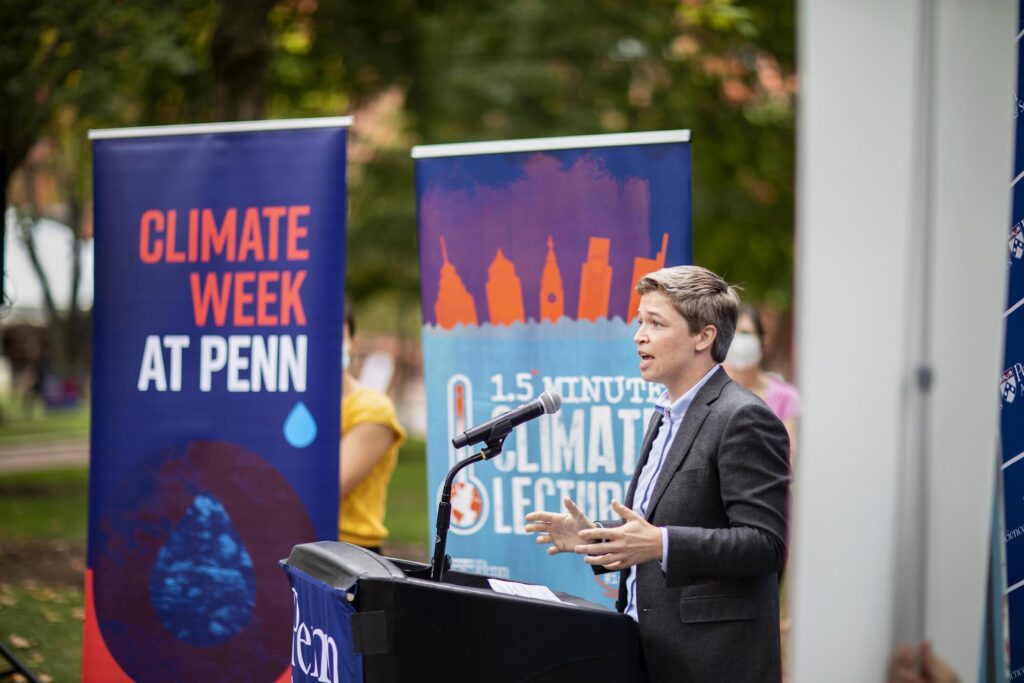

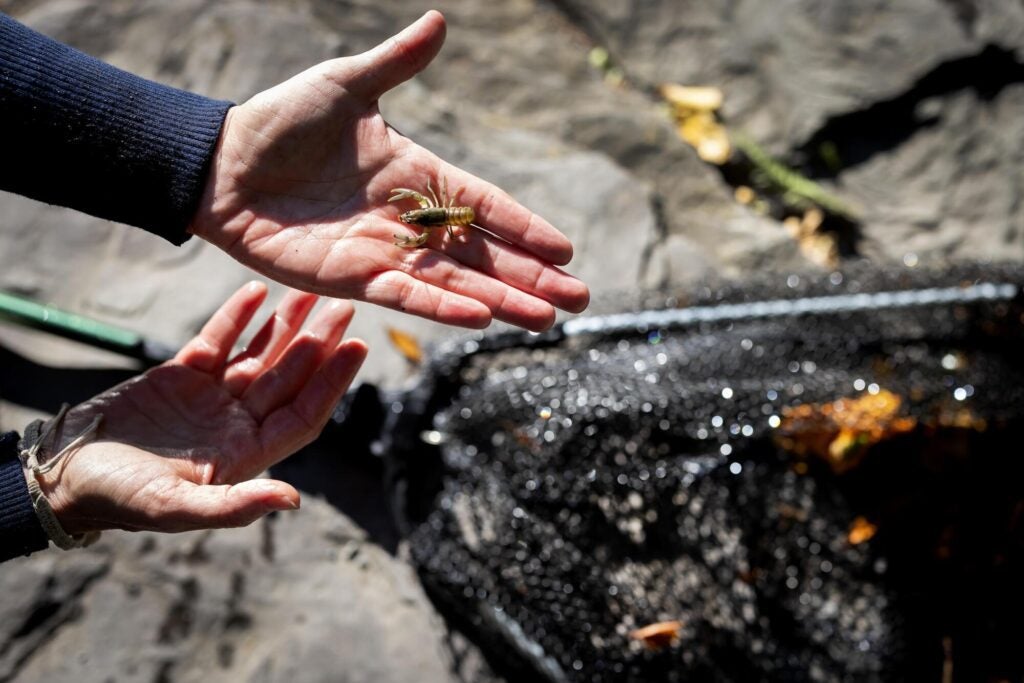
Wellness and well-being are woven into the life of Penn’s campus for students, faculty, postdocs, and staff. In the sixth part of a new series highlighting University resources supporting the campus community, Penn Today focuses on family, from sexual and reproductive health to resources for parents of young children.
“Penn is a very big place, and a lot of times people don’t know where to go for support,” says Elisa Foster, director of the Penn Women’s Center, a place that can be a first stop. “We often help people navigate resources on campus and make sure they know their rights and University policies.” The Women’s Center is one of the University’s confidential resource offices.
Offices and centers such as the Penn Women’s Center, Wellness at Penn, the Family Resource Center, the Division of Human Resources, the LGBT Center, Penn Violence Prevention, and University Life work together to support students, faculty, staff, and postdocs.
Karen Kille, manager of quality of work-life programs for HR, says it’s important “for people to take time to engage with the resources and support. To navigate uncertainty or stressful situations, it’s best to have those things in your toolbox in advance.” She encourages people to educate themselves on other topics covered in Penn Today’s series, such as financial wellness and mental health resources.
Laurie McCall is the director of the Platt Student Performing Arts House, as well as staff coordinator of the PennQuest Pre-Orientation Program. She has been at with University Life since 1992, starting as assistant director of New Student Orientation. Since 2007, she has been at the Platt House, which opened the previous year with support from Penn alums Marc and Julie Platt, first as associate director and since 2013 as director. Her undergraduate degree is in education and her graduate degree in communication.
McCall leads the staff at the Platt House, which supports Penn’s 70-plus groups that stage more than 100 comedy, spoken word, dance, theater, voice, and music events each year, involving more than 1,400 undergraduates. The Platt House also provides trainings, workshops, masterclasses, and career mentorship, connecting students with alumni in the field. And it facilitates youth arts mentorship, community outreach, and engagement with the regional arts industry.
“We provide a scaffold of support with resources, care, and advice to our students who are in performing arts groups who want to perform,” McCall says. “But we are also advocates to make sure that they have what they need to perform on campus.”
A big part of her job is helping to solve problems. A continual challenge is finding and securing and allocating space for rehearsals and performances in buildings throughout the campus. She is very much looking forward to the 2027 opening of the new student performing arts center at 33rd and Chestnut streets; construction started in September. The Platt House team will manage the programming in the new performance center.
Another role is to support the student Performing Arts Council (PAC), which governs the 45 groups that have priority for show spaces and Student Activities Council funding. McCall and her team of five also are in contact with the 35-some independent groups and help when needed. Two manage the PAC Shop, which helps students with set-building and technical needs.
And part of what McCall does is answer the call when the students are trying to manage a challenge and ask for direction. “They don’t always know how to handle conflicts within their groups, and we are helping them do that,” McCall says. “I focus on trying to make sure that they understand what it means to be inclusive.”
Also, she encourages students to enjoy their time in performing arts, to keep their passion, to try not to get stressed out, and to focus on the friendships and the fun.
McCall was a stage manager when she was in school: “I’m still stage-managing in the way that you’re getting everyone what they need in the time that they need it.” She also manages the PennQuest Pre-Orientation experience, selecting and training Penn student volunteers who lead a group of 130 incoming first-year students on a camping and hiking trip in the summer.
“I’m a person who has been managing student group activities my whole life,” she says.
Student performing arts are woven into the fabric of the University, included in every formal occasion and other events, she says. And the experiences for the students involved form lasting impressions and friendships, McCall says, and she is proud to play a part.
“I would like every student and every student club to have an advisor who they can come to with their issues. I know the pressure that students have academically and timewise, and I don’t want their extracurricular life to be part of that. Extracurriculars should be where they can release their stress,” McCall says. “My goal is to improve their quality of life, especially through the arts, which encompasses so many life lessons and touches so many people. I want to be able to help them in any way I can.”
A calendar of the dozens of student performing arts productions scheduled for this fall is available on the Platt House website.
The summer before she started college, a black spot appeared in Sophie Kadan’s sight. Three years later, Kadan estimates that she has only about 70% of the vision in her left eye. Colors are blotchy, she says, and it gets worse at night. The transition between high school and college is huge for everyone, Kadan says, but her vision loss made things harder.
It was another year before Kadan, a fourth-year student from Doylestown, Pennsylvania, majoring in math and physics, asked for academic accommodations. She was taking a course in American Sign Language (ASL) which, unlike other languages, is almost exclusively visual. Kadan hadn’t realized how much she relied on her other senses until she was staring at a screen, watching a video of someone signing, in a roomful of other people doing the same for a timed test.
Kadan became one of hundreds of Penn students who approach the Weingarten Center’s Disability Services each year. Weingarten follows guidelines set forth by the Americans with Disabilities Act (ADA) and recognizes a range of disabilities including temporary, short-term injuries like a student needing transit or time off because of a broken limb; neurodivergence, including dyslexia, autism, and attention deficit/hyperactivity disorder (ADHD); chronic medical conditions like diabetes; and mental health conditions like anxiety and depression.
Students come to Weingarten seeking counseling or learning support or by requesting accommodations. Sometimes, they need all three. “There’s no wrong door of entering the Weingarten experience,” says Jane Holahan, executive director.
Many students come in knowing their accommodation needs and have documentation from their high schools, Holahan says. Many others come in because they’ve recently discovered they need help. “Sometimes, people hit that brick wall when they go to college,” she says.
About 20% of all Penn students identify as having a disability, Holahan says. These numbers are on par with the national average, which according to the Institute of Education Sciences was 21% for undergraduates for the 2019-20 academic year, and that number continues to increase.
In the last 20 years, the number of students registered with disability services has almost tripled, according to Weingarten. At Penn, there were 1,622 students registered with disability services through Weingarten in the 2023 academic year and 1,455 students registered in the 2019 academic year, compared with 570 registered students in the 2003 academic year, she says.

Holahan, who has worked in the field since 1998, says she started seeing an increase in requests for accommodations around 2010, before she came to Penn in 2019. She attributes this nationwide trend to an increase in awareness, not to an increase in disabilities.
Diagnosis numbers for “invisible disabilities” are on the rise. Anxiety and depression are increasing, especially among young people. According to the Centers for Disease Control and Prevention, 1 in 9 children has ADHD and the population average of autistic people is 1 in 36.
“For a long time, there were people who were afraid to self-disclose they had a disability,” says Holahan. “A lot of people did not know their rights, but now there’s better education. There’s less of a stigma in coming forward to ask for accommodations.”
Holahan attributes the decrease in stigma to the 2008 amendment of the Americans with Disabilities Act, which broadened the scope of “disability” beyond such named conditions as cancer, diabetes, and epilepsy to make it easier for people seeking ADA protection to establish their disabilities.
Increased awareness and education efforts by Weingarten and other disability-service centers and disability advocates she says are “another reason why people are coming forward.”
Disability advocacy
Kadan says that her vision loss was the first indication that she had multiple sclerosis, a degenerative muscular disease. It’s a relatively straightforward diagnosis and one recognized by the ADA. Still, Kadan was anxious about approaching Weingarten. She remembers thinking, “Is it OK for me to ask for this? Is that valid?”
By requesting accommodations, Kadan was able to test in a different room, receive extra time during exams, and use software provided by Weingarten to transcribe some of her textbooks, which she says was especially helpful in math because of the notations. Kadan also received authorization to use a notetaker to assist with her ASL coursework.
“What is a disability and what is normal?” Kadan asks. People have different relationships with disability and identity, she says, but when it comes to education, “normal” should be providing the best learning experience.
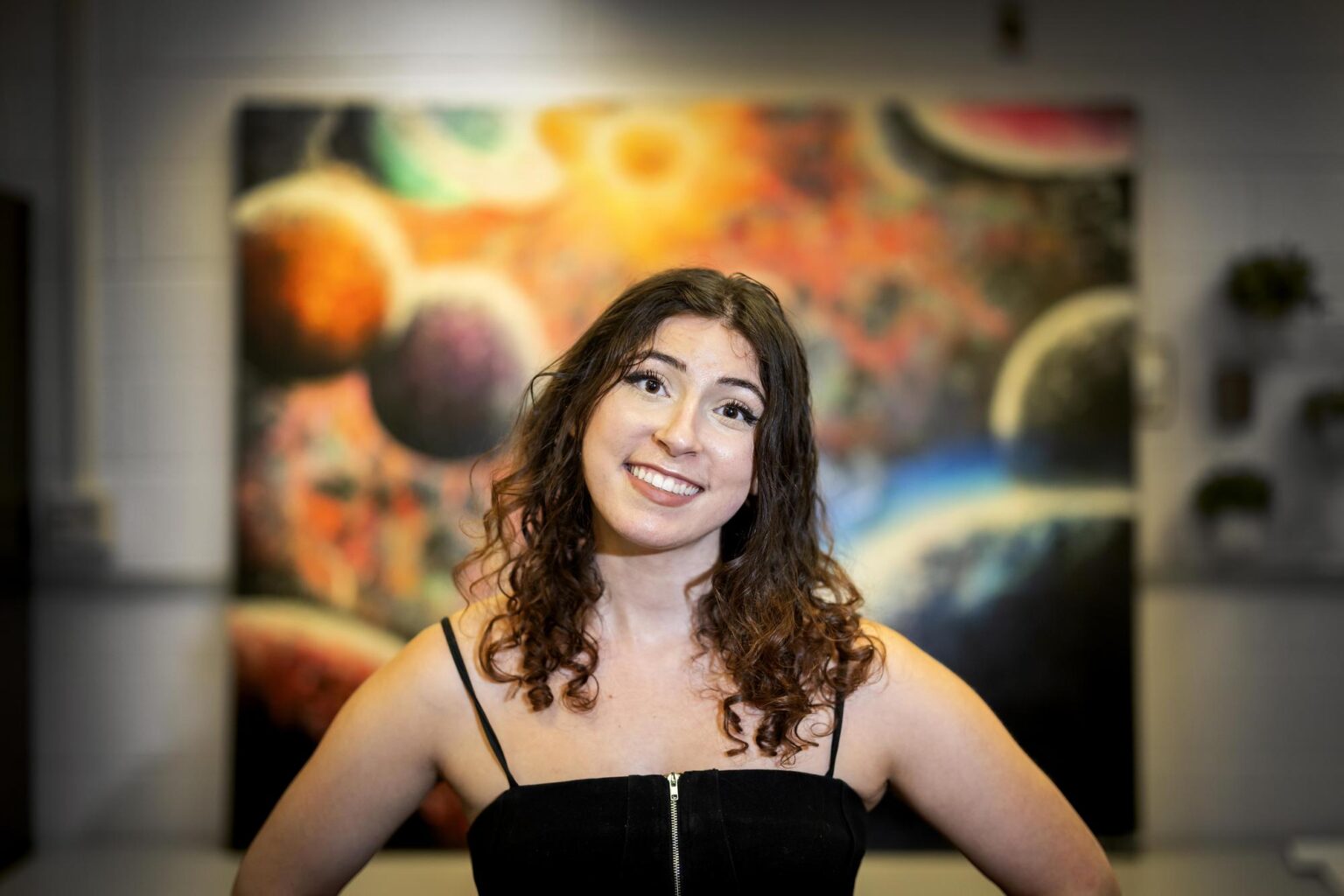
Kadan joined the Disabled Coalition at Penn. Also called DisCo, the student-run club for people with disabilities was co-founded by Lex Gilbert, a fourth-year majoring in communications and gender, sexuality, and women’s studies, and Dale Brokaw, a fourth-year doctoral candidate in the Cell and Molecular Biology Program, in the spring of 2022. With about 500 followers, the group connects over GroupMe and social media, as well as through campus events, Kadan says.
Originally, the Disabled Coalition was a social club, Brokaw says, but it quickly shifted into advocacy to meet student needs. The group meets regularly with Penn Transit to discuss accommodations requested by members and has done a physical accessibility audit of Van Pelt-Dietrich Library Center with University officials and Libraries staff.
The Disabled Coalition’s recommendations included lowering desks, increasing signage, and making the ground floor entrance more accessible to students, Brokaw says.
Brokaw primarily pursues accommodations with their lab manager, often seeking to modify seating or lab chores. “It’s interpersonal relations,” they say. That can be effective, but if there are any issues “the onus is on the student to do the advocacy and problem solving,” they say.
Brokaw is familiar with disability services, having been diagnosed with dyslexia early on in their academic career. But right before starting their graduate program, Brokaw developed long-haul COVID-19, then autoimmune arthritis. This means that in addition to learning differences Brokaw has physical symptoms. They use a walking aid and experience chronic fatigue and pain. The medication they take makes them immunocompromised, and they get sick more frequently.
Brokaw is one of DisCo’s primary advocates, a service they undertake on top of their academic work and managing a chronic illness. They’re also starting to think about life after graduation.
“People have expressed concern about me being too out about having a disability because it might affect my prospects in the future,” Brokaw says. “For any student, I think having a clear understanding of what a job will be like and how their identity fits within the job is really important.”
Brokaw and Gilbert are also interested in developing a disability advocacy network, similar to the LGBT Center’s “Faculty Out List,” a way for faculty to identify themselves so that students can connect with them and hear about experiences in the field.
Brokaw acknowledges that the logistics of developing such a list are complicated. “There’s also generational differences in how willing people are to be out, given the level of discrimination they might have felt at various points,” they say. “For students on campus, it’s a question of, ‘How is my identity interfacing with my classroom?’”
La Casa Latina is offering a range of events in celebration of its 25th anniversary and Latinx Heritage Month.
La Casa Latina, the main center for Latinx students at the University, organized a schedule for the month featuring panel discussions, an author talk, student gatherings, and conferences. It also hosted a symposium on Sept. 21 recognizing a quarter-century of “dedicated service, advocacy, and cultural empowerment,” according to La Casa Latina Director Krista Cortes.
“This anniversary is not just a recognition of the center’s founding but a reflection on the collective efforts of its founders and the ongoing work required to serve a dynamic and diverse Penn Latine community,” Cortes said.
The celebration commenced with the Procession of Flags on Sept. 16, where students marched down Locust Walk holding the flags of Latin America. The event was followed by an Open House of La Casa Latina.
On Sept. 21, a symposium centered around La Casa Latina’s 25th anniversary took place at the ARCH Building, featuring two panels and an award luncheon.
The first panel reflected on the center’s evolution and impact since its establishment in 1999. Founding members Luz Marin and Jorge Santiago-Aviles spoke on the panel, as well as Nursing senior Salvador Galvez Jr. The second session featured the perspectives of students and recent graduates on the intersections of identity and activism.
In her remarks at the symposium, Cortes described the cultural center as a “landing space” for students.
She highlighted the establishment of the Latinx Graduation Ceremony in 2021, which offers a bilingual graduation in English and Spanish as students walk the stage with their parents and relatives. La Casa Latina also invites cultural dancers, musicians, and speakers to perform at the graduation. Cortes said that the initiative emerged from student efforts after the COVID-19 pandemic disrupted many of their formative years.
La Casa Latina gave out seven awards to students and faculty to celebrate their contributions to Penn’s Latin community. The two Service & Dedication Awards went to retired office coordinator Maritza Santiago Torres and Johnny Irizarry, who is the longest-serving director of La Casa Latina.
Amelia Becerra, a College junior and La Casa Latina program assistant, said during the symposium that it’s always “nice to see alumni come back, as they help me believe it is possible to do something here and to see that they’ve all been successful really validates my experience.”
On Sept. 26, graduate students congregated in Castor Courtyard for the Graduate Student Bienvenida. To conclude September’s celebrations, Luis Miranda Jr., a Puerto Rican author, visited the University on Sept. 30 to discuss the role of Latinx voices in politics.
Future events for October include the Dolores Huerta lecture and the 7th PLAC Conference, which will discuss public and community-engaged scholarship in Latin America, the Caribbean, and its diaspora.
College senior and La Casa Latina program assistant, Andrea Barajas, who was also a photographer for the Daily Pennsylvanian, said that planning these events didn’t come without challenges.
During previous Latinx Heritage Months, La Casa Latina hosted events nearly every day. This year, to remedy the stress of organizing such frequent events, Barajas said that La Casa Latina is focusing on “recognizing their capacities and limitations.”
Barajas added that La Casa Latina has worked to plan fun events despite funding options becoming more limited. For example, she led an event in February where she made paper flower bouquets, having purchased paper and fake flowers in bulk from Amazon.
“We’ve had to get a bit more conservative with the financial aspect, but that also means we get to be a little more creative with it,” Barajas said.
Galvez Jr. said that La Casa Latina has greatly evolved since he joined as a first year, especially in terms of engagement and outreach.
“It seems like there are a lot more Latine students on campus, and I think those students are finding the space of La Casa,” Galvez Jr. said. “A part of me is really proud of the work that we’re putting into making sure that people know we’re a center, a resource for them.”
Galvez Jr. also said that there has been an increase in programming and event planning, highlighting the establishment of the bilingual graduation.
“Latine graduating students at Penn always share that that’s something really special to them, especially when their parents may not speak English or come from immigrant households,” Galvez Jr. said. “Having a graduation that they can participate in and semi-understand is really nice as well.”
Looking ahead, La Casa Latina aims to engage with the broader Philadelphia Latinx community, build connections with Latinx alumni, and compile a digital archive of Latinx legacies at the University. In 2025, La Casa Latina will launch a scholars program that supports undergraduate and graduate students.
“Our main goal is to increase our visibility and really show administration and continue to show students that we are a resource for them,” Galvez Jr. said.
